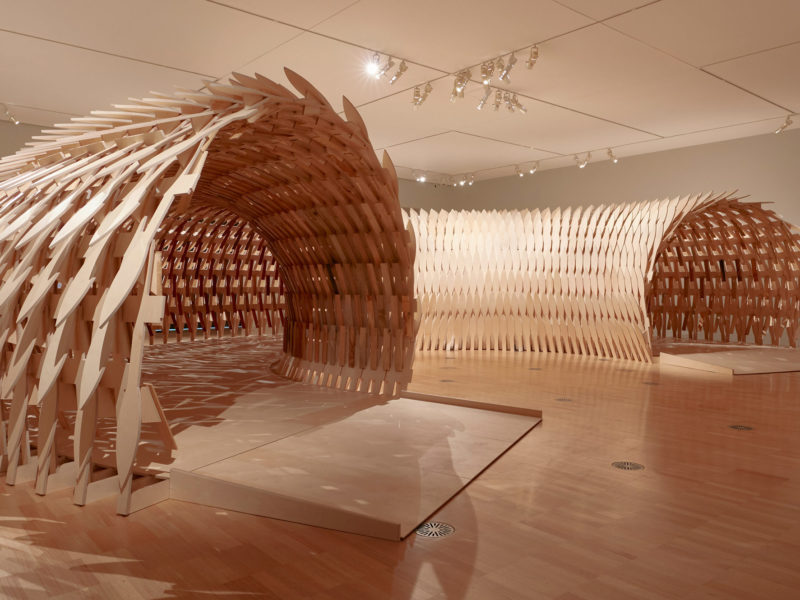
Source: Vietnam Sourcing News
Japanese architect Kengo Kuma and Australian artist Geoff Nees have created a tactile, round pavilion utilizing timber collected from Melbourne’s Royal Botanic Gardens.
Botanical Pavilion slots collectively like a puzzle with out the necessity for steel helps.
Kuma and Nees‘s design was commissioned for the NGV Triennial in response to Korean artist Lee Ufan’s 2017 portray named Dialogue.
The softly curving pavilion sits in entrance of the portray, framing it by means of its openings at each ends.
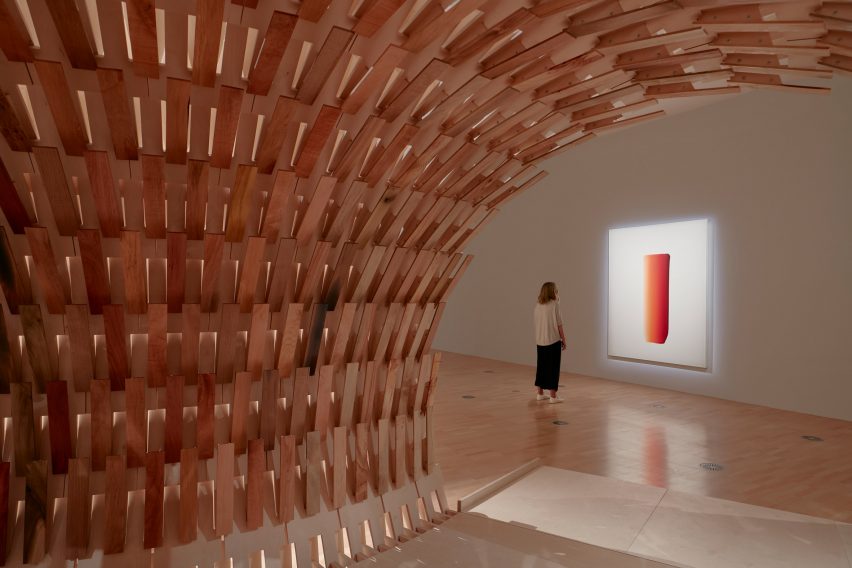
Botanical Pavilion was made within the Japanese custom of wood structure and options the form of natural form that Kuma has typically returned to.
“In nature many of the shapes are natural, and because the pavilions I make are manufactured from pure supplies equivalent to wooden, I feel natural and curved shapes assist to raised join and mix the structure within the pure world,” Kuma instructed Dezeen.
“Another excuse comes from the truth that a lot of my installations are made by assembling smaller parts collectively to kind bigger buildings.”
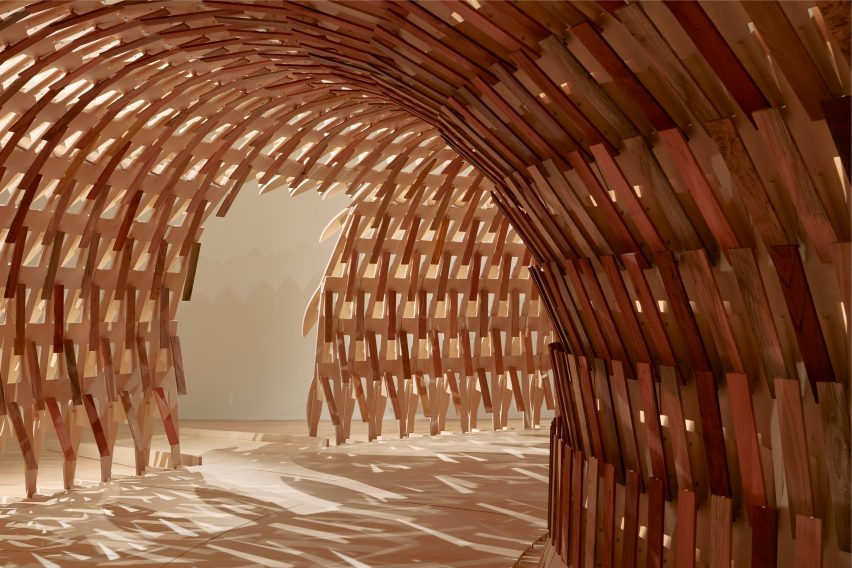
“Curved buildings like arches and domes are probably the most environment friendly means of reaching a construction with minimal supplies,” he added.
The goal of the pavilion was to present new life to the “stunning however unused wooden” minimize from the timber of Melbourne’s Royal Botanical Gardens.
Kuma and Nees collected timber from timber that had been felled or eliminated over a number of years, a few of which pre-date European settlement, and used it to create the tessellated pavilion.
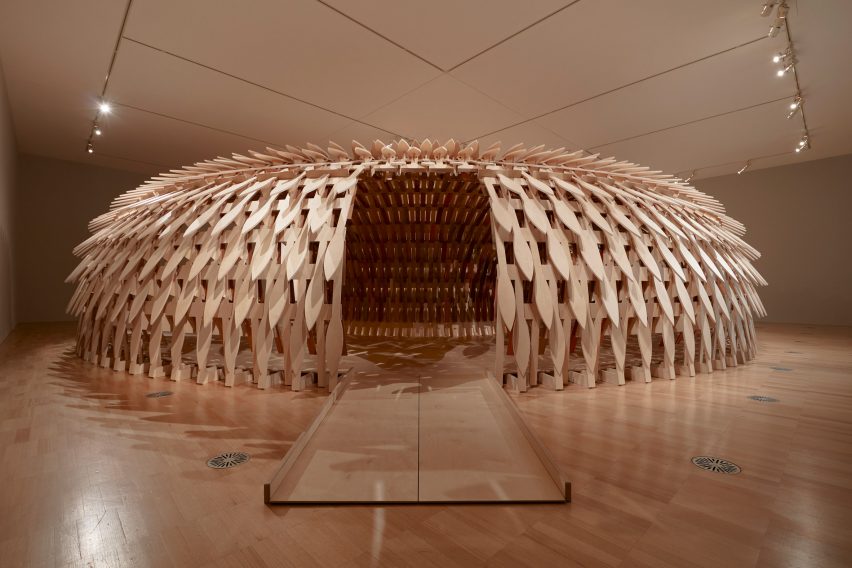
Kuma’s strategy to the design was derived from the Japanese carpentry custom, by which you utilize smaller parts and depend on joinery to realize bigger spans.
“I considered making a round wood structural pores and skin after which droop the botanical timber in it,” he mentioned.
“The semi-circular form of the pavilion invitations the customer right into a journey to discover the area and expertise the assorted essences of wooden,” Kuma added.
“The porous construction is assembled like a tridimensional puzzle with out the usage of steel connections to have the ability to reassemble it in a unique location.”
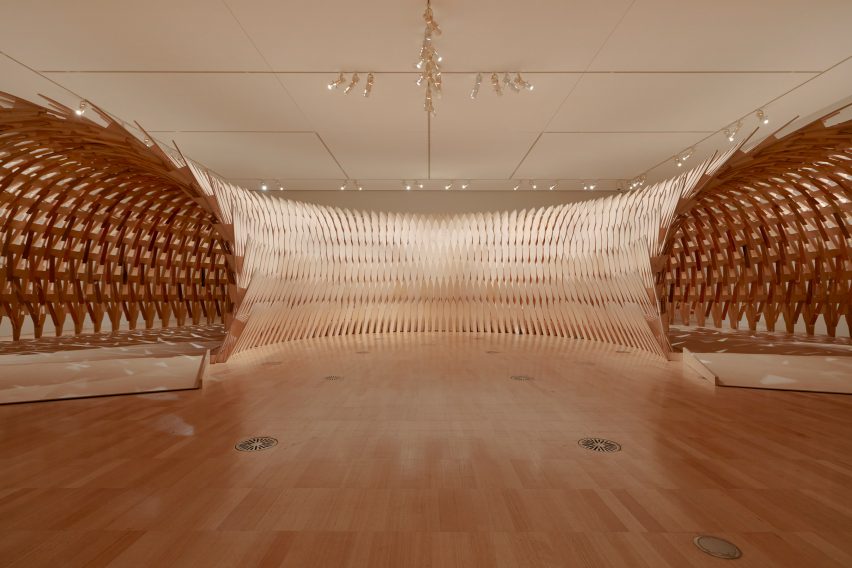
Historically, Japanese carpenters would use timber of various ages for various functions.
“In an identical means the Botanical Pavilion, displaying the timber as a substitute of burning it, goals to lift consciousness to the sweetness and high quality of this materials and the a number of makes use of it will possibly have all through its life cycle,” Kuma defined.
Whereas all of the timber come from the identical park, the architect used totally different species to assemble the pavilion. These had been sorted by means of color coding.
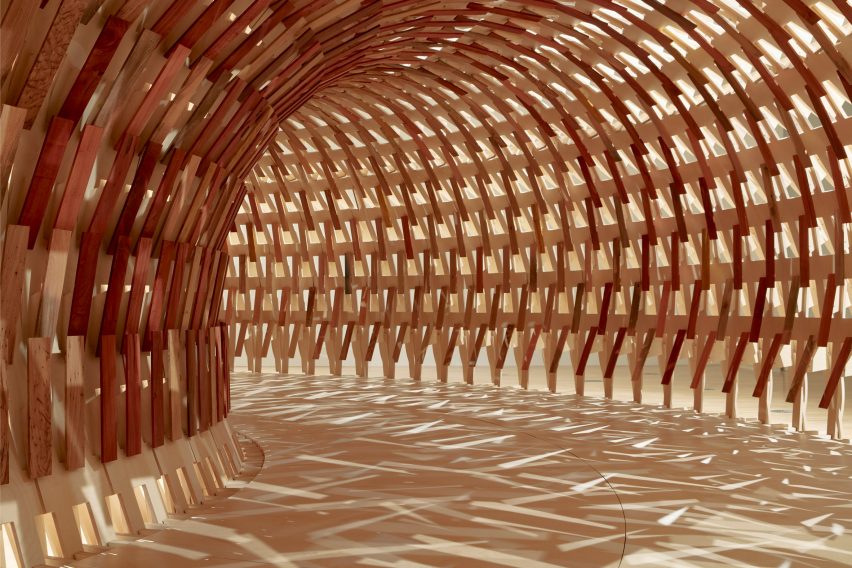
“The botanical species have their very own distinctive properties and texture, the color is their most seen property,” Kuma mentioned.
“We then catalogued the obtainable botanical timber by color and created a sample that has a gradient from darker to lighter to accompany the guests’ journey by means of the pavilion; it will give a unique notion of sunshine and color at each part of the pavilion.”
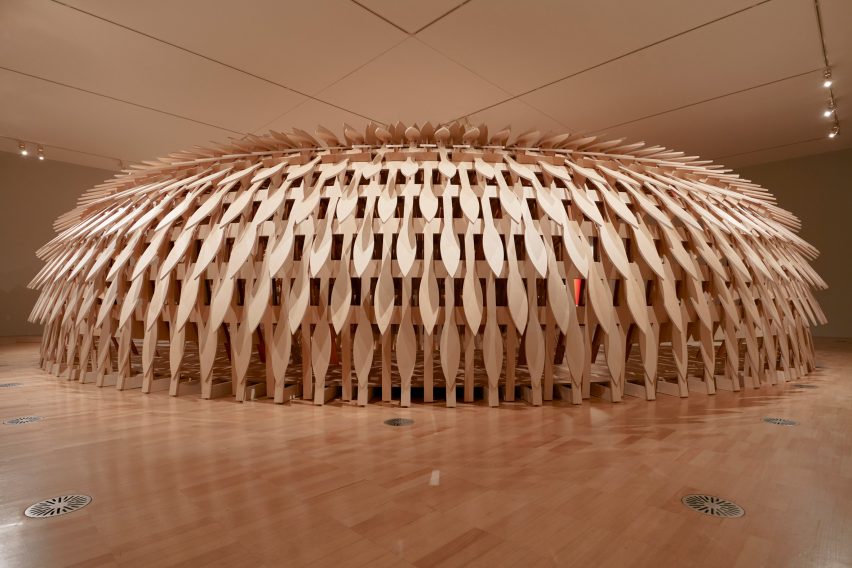
Different installations on present on the NGV Triennial embrace South African designer Porky Hefer’s mutant sea creatures, designed to warn of ocean pollution, and British designer Alice Potts’ face shields made from food waste.
Images: Set up view of Kengo Kuma & Associates and Geoffrey Nees’s work Botanical Pavilion by Tom Ross.
Botanical Pavilion is on view at NGV Worldwide in Melbourne from 19 December 2020 to 18 April 2021. See Dezeen Events Guide for an up-to-date checklist of structure and design occasions going down worldwide.
